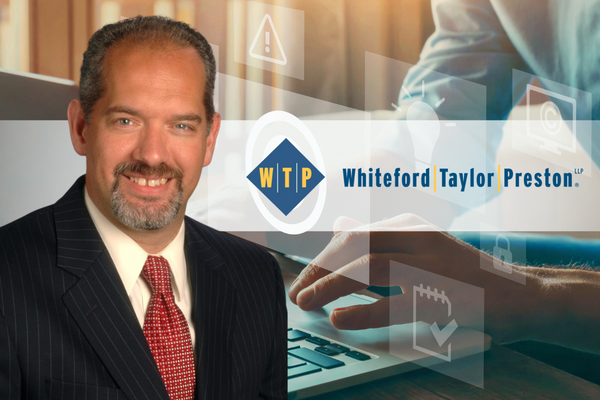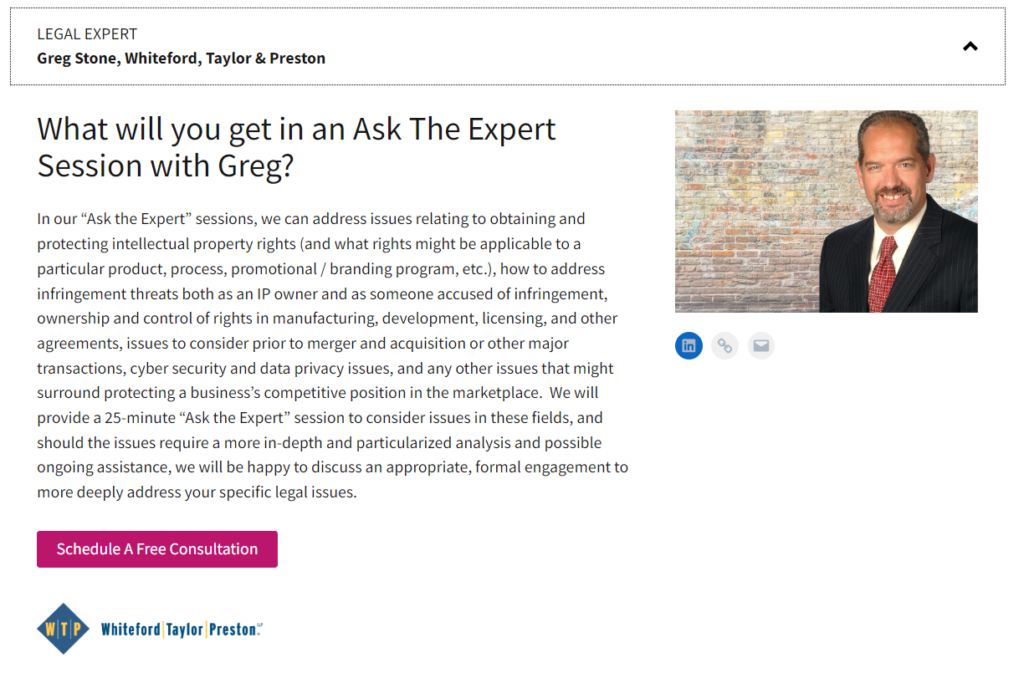What to do Until Clarity Comes: Businesses Cope with Uncertainty on Software-implemented Patents

As an intellectual property lawyer, Greg Stone spends much of his life at the intersection of law and technology – and it’s an intersection that is badly in need of better traffic signals from Congress, the courts, and the U.S. Patent & Trademark Office, he said.
“One of the biggest issues we’re facing is that inventions that would have gotten a green light a decade ago are too frequently barred today, as ‘abstract ideas’ that are ineligible for patent protection,” said Stone, who co-chairs the Intellectual Property and Technology Section at Whiteford Taylor Preston.
Worse yet for innovative businesses, the hardest-hit patents involve software-implemented inventions for business methods, financial transactions, or any form of social sciences, including social media, he said.
“Really, the problem is the lack of definition or direction over what is and is not an ‘abstract idea’,” Stone said.
That ambiguity comes from a 2014 Supreme Court ruling, Alice Corp. v. CLS Bank, which invalidated a patent on a software-implemented process for minimizing risk when closing a deal. The justices said the invention was ineligible for a patent because it described an “abstract idea” without a separate “inventive concept” to save it. Unfortunately, they also said it was unnecessary to define those terms with any precision.
Not surprisingly, as lower courts and the Patent Office have attempted to apply that standard, the results have been “excessively incoherent, inconsistent and chaotic,” former Federal Circuit Chief Judge Paul Michel told Congress in 2019.
Particularly at the patent office, the effects of Alice vary widely depending on the team (known as an “art unit”) assigned to review the application, Stone said. If an application describes a software-implemented invention, and it’s assigned to a financial, business, or social media art unit, “I can almost guarantee you that you will get a rejection” in the first round of the examination, he said.
Given the considerable time and expense involved, is it even worth applying for a patent on a software-implemented process?
That’s a question Stone hears frequently from his clients – and one he expects to hear this October, when he serves as an “Ask the Experts” at Innovate 2022, a tech-ops conference sponsored by Think Systems.
“It’s really going to be dictated by the specifics of what the innovation is,” Stone said. “If it’s something highly sophisticated, in a relatively quiet field, and incredibly tough to reverse-engineer, then they might weigh more heavily the option of relying on trade-secret protection.”
Otherwise, he said, applying for patent protection may still be the better bet, for two reasons.
First, he said, there are ways to draft the patent application to improve its chance of success. Critically, the Title, Abstract, Specifications and Claims sections should focus on the “technological solution to a technological problem,” and walk through that solution step-by-step, in great detail. The potential uses of the invention — in finance, say, or to analyze information from a user’s online profile — should be used only as examples (or “embodiments”).
“When an application arrives at the Patent Office, it gets administratively routed to an art unit, often based on the Title and Abstract,” Stone said. “So, if those sections flag that the application is related to finance, business, or social sciences, it will wind up in a financial, business, or social-science art unit,” where the chance of rejection as an “abstract idea” is high.
The second, and more fundamental, reason is that the law is in flux and could change in the inventor’s favor while the application or an appeal is pending
“The entire patent bar has been up in arms about this issue since 2014, clamoring for somebody to clean it up,” Stone said. As the inconsistent court decisions mount, “at any point it’s possible that the Supreme Court will agree to review one of those cases and offer more constructive authority.”
The court declined cert in a closely watched case in June; but now, Congress is considering a legislative response.
The Patent Eligibility Restoration Act (S. 4734) was introduced in the Senate in August, “and I think the title says it all,” Stone said. “They’re trying to restore patentability back to inventions that were previously considered patent-eligible, and now all of a sudden may not be, due to this undefined term of ‘abstract idea’.”
While there’s no guarantee that the Supreme Court or Congress will resolve the underlying ambiguity, he said, one thing is certain: “If they do, then inventors that have launched their products commercially without patent protection are going to be left out in the cold.”

